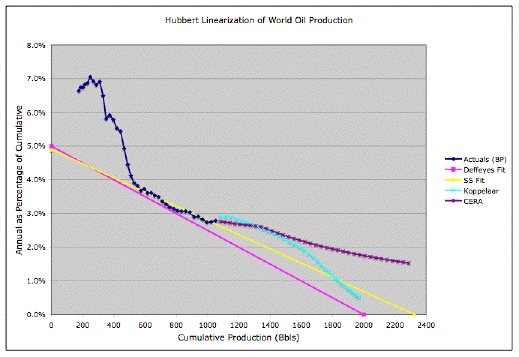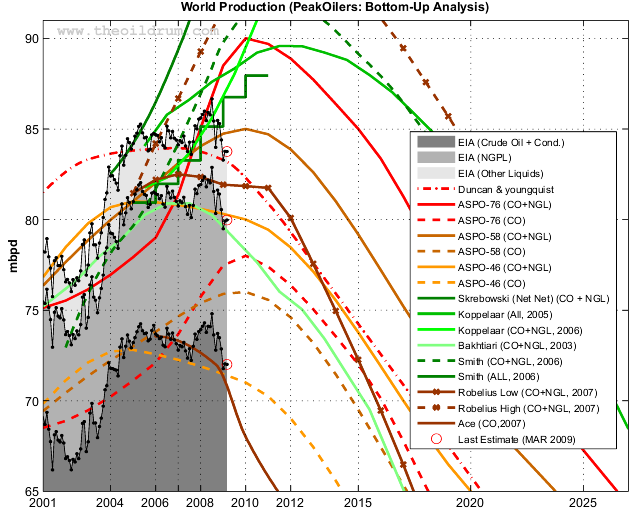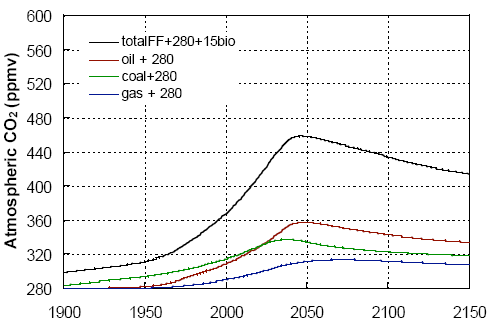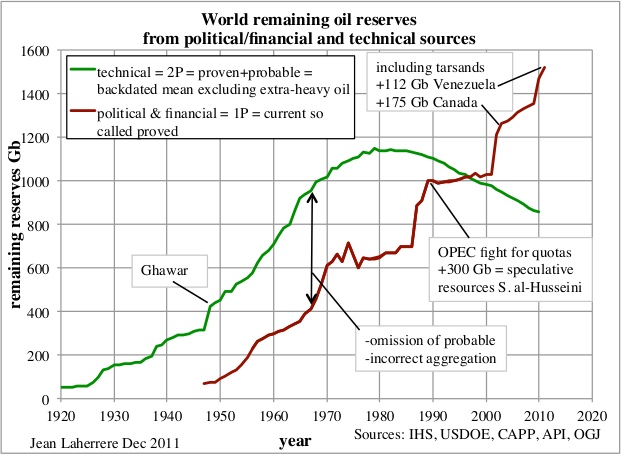 This post is a story of TheOilDrum, as I lived it. It is a collection of loose memories patched together into some sort of chronological order. Memory is not fully reliable, same dates or periods may not be precise. This is above all a personal account of the most important events during the website life time.
This post is a story of TheOilDrum, as I lived it. It is a collection of loose memories patched together into some sort of chronological order. Memory is not fully reliable, same dates or periods may not be precise. This is above all a personal account of the most important events during the website life time.
Certainly a lot is left untold. I was never part of the editorial or administrative boards, thus plenty of the behind scenes events escaped me. The same story told by someone else will surely be different. In spite of being a personal retrospection, I hope it can still provide an holistic view of what TheOilDrum was and point the potentials that this fantastic experiment unleashed.
This post has been in the making for long. The idea came up immediately after the announcement of the website closure, but other commitments kept it at bay. The ninth anniversary of TheOilDrum foundation passed just weeks ago, but still not that late to celebrate. Grab a portion of your favourite ingestible liquid and let yourself go in this journey through time.
Part I - Growth
I had my Peak Oil epiphany in May of 2005. ASPO had its international conference in Lisbon and the little attention the media lent to the event was enough to get me curious. I had already read articles by Ali Bakhtiari and Colin Campbell, but it was only then that I understood the full reach of the issue. After surviving two weeks of depression I simply committed to learn the most I could on the matter, seeking possible options society could have in face of such gloomy reality. After a month or so I ended up at this blog called TheOilDrum and would stay around much longer than I could ever imagine.
TheOilDrum was the creation of two academics, Kyle Saunders (Prof. Goose) and David Summers (Heanding Out). The later had some interesting weekly posts with layman lectures on the fossil fuel industry workings; the former focused on socio-economic issues and produced assorted digests of relevant news. It was just the right place for someone that already knew the problematic but was aiming for deeper understanding. "It felt like coming home" would later say one of the editors, it was just that.
During the summer of 2005 TheOilDrum drafted whom probably became its most charismatic crew member: Stuart Staniford. Possessing a stout background on Physics and Mathematics, he would find the time to produce high quality content several times per week. With a natural talent for teaching complex subjects to laymen, he explored the strengths and weakness of pure mathematical models to forecast fossil fuel production, bringing to the public domain an heap of knowledge that was buried in industry reports and scientific journals. The term "Hubbert Linearisation" was coined by him.
And with Stuart came also an hike in comment quality that completed the rigging of TheOilDrum. From these early days two commentators in particular would have especial impact on the course of the website: WebHubbleTelescope and Samuel Foucher (aka Khebab).
But it would be the detailed reporting on the Katrina hurricane and its impact that definitely catapulted TheOilDrum to the spotlight - the traffic was such that brought the site momentarily offline. Months after coming to life as just another blog, TheOilDrum was hosted as a stand alone web site in a dedicated infrastructure with customised software. A donation button was added to help support the rising costs that came with rising traffic; adverts would come soon after. The number of contributors started to grow, in tandem with expanding readership. Different topics came up, with more focus on current events.

The graph that created the term "Hubbert Linearisation". The post where it was portrayed set the template for the sort of content TheOilDrum would host the following years.
My first contribution to TheOilDrum was published in March of 2006. It was a general exposure of the Olduvai Theory - something that always fascinated me - in shaky English and still missing some understanding on the subject. In the fall of that year my first exploit into petroleum exports was published, a matter with a profound impact that would absorb me for years to come. Weeks later I was invited by Kyle to integrate a team to start the European branch of TheOilDrum, together with Chris Vernon, Euan Mearns (aka Cry Wolf), Jérôme Guillet (Jérôme à Paris) and Rembrandt Koppelaar.
Personally this is the time that I recall with greater joy. The direct discussion with the crew members and the regular contributions brought me a lot to learn. The number of contributors was regularly increasing, resulting in an ever wider range of insight and opinions. Among them I would find some of my best friends. What still strikes me about this time is the felling of a collective learning experience. The drive to publish an article at TheOilDrum meant the immediate sharing of knowledge; in the comments readers would bring further insight and information; the understanding evolved rapidly and simultaneously to everyone following the website and the theme for the next post would start emerging at the back of someone's mind.
 The logo for TheOilDrum:Europe was one of my contributions to the website.
The logo for TheOilDrum:Europe was one of my contributions to the website.Throughout this period forecasting a date for Peak Oil (or better said a year) took much of the effort. The world was happily conducting its business as usual, but those frequenting the forum where eager to know for how long it would remain as usual. Colin Campbell always advised against such obsession, "it is not knowing if the peak is this or that year that is import, rather the vision of the decline that follows". However this obsession at TheOilDrum would have a capital role showing how erroneous were - and still are - the forecasting methods used by international institutions.
The expanding quantity and quality of the content hosted at TheOilDrum slowly transformed it in a driving force in the still small Peak Oil world. Instead of just aggregating and distilling content from others, some of the articles published where original enough to influence energy research altogether. By 2007 even ASPO founders where quoting analysis published by TheOilDrum. The website had become the number one place on the web for Peak Oil and energy constraints.
 Following the plateau. The monthly petroleum production figures published by the IEA and the EIA soon became an obsession, in spite of the large uncertainty surrounding their estimates.
Following the plateau. The monthly petroleum production figures published by the IEA and the EIA soon became an obsession, in spite of the large uncertainty surrounding their estimates.The 2007 ASPO conference took place in Corcaigh, Ireland. In total there were seven TheOilDrum crew members there, with at least one invited as keynote speaker, in what would be one of the largest TheOilDrum gatherings ever to take place in Europe.
On the first day of conference the keynote speaker was James Schleisinger, who promptly declared ASPO the winner of the debate, with the public generally accepting constraints to further growth in petroleum production. On the second day of conference the US Federal Reserve cut interest rates by 0.5 % and crude prices set a new all time record: 84 $/b, if memory does not fail. There was a broad sense of vindication, but also that difficulties where right ahead; the swift taming of interest rates was already a sign that things were going deeply wrong.
That conference is still known by some as Peak ASPO. The price run up that followed seemed to be the definitive evidence that Peak Oil was arriving. Crude prices would cross the mythical barrier of 100 $/b in the first days of 2008, entailing a 50% run up in the subsequent semester. By then coal prices had tripled from an year before. These where great days for TheOilDrum, with worried consumers shooting up daily visits, regularly surpassing 10 000 on week days.
Crude prices set the all time record of 147 $/b in June of 2008, almost tripling from 2005, when TheOilDrum started. Daniel Yergin, up to then a vocal price bear, entailed a notable U-turn, forecasting a continued price rise for the foreseeable future. The reaction of one TheOilDrum crew member was symptomatic: "Everybody go short!". The train was hitting the wall, and hard.
I believe it was somewhere in the winter of 2007/2008 that Stuart Staniford left TheOilDrum, rather unexpectedly. At first I feared the loss of the most charismatic crew member could have a negative impact on the website. But by then TheOilDrum had gained a dimension where it no longer relayed on single individuals. Throughout those early years Kyle diligently sought to expand the crew, something he achieved brilliantly, hiking content quality at the same time. Important contributors like Brian Maschoff (JulesBurn), Gail Tverberg (Gail the Actuary), Ugo Bardi, Nate Hagens (aka thelastsasquatch), Engineer-Poet, Big Gav, Nicole Foss (Stoneleigh), Tony Eriksen (ace) or Phil Hart had already been drafted (or were in the process of being drafted). To these added Leanan, with the regular Drumbeat, and chronic commentators like Jeffrey Brown, Alan Drake, Bob Shaw and many, many others. Stuart's work, putting TheOilDrum on the map, was essentially done.

Part II - Peak
In 2008 there were over 20 folk working for TheOilDrum, spread across several sub-sites, with regional or thematic focus. The content was widening fast, with more subjects linked to social sciences, beyond the usual mathematical or geological analysis. It seemed obvious prices would be the ultimate check on production growth and studying the consequences became ever more important.
The financial crisis that hit the world in the Fall of 2008 was a vindication of the concerns brought up by TheOilDrum, even if it had compounded with serious issues in the finance industry. There was a bitter downside to it however: petroleum prices plummeted and with them the popular interest on the site. And besides, for someone that had just lost job, house and on, fuel prices suddenly become a minor detail.
By late 2008 economical and financial contents where dominating the post queue. It started with the Bear Stearns bank being sold for peanuts, then the spectacular collapse of petroleum prices (and most other commodities) and finally the débâcle with the bankruptcy of the Lehman Brothers bank. The western world hold its breath over a financial landscape that had not been so scary since 1980.
The end effects of resource constraints on the economy where explored from multiple perspectives: the monetary system, financial legislation, even human behaviour. TheOilDrum was clearly overextending itself, also a reflex of the expanding contributing staff, but looking back, perhaps not so wisely. At some point TheOilDrum:Canada was portraying financial content almost exclusively, which lead to its detachment into AutomaticEarth, perhaps the first high profile spin-off from TheOilDrum.
In part, this new found focus on financial issues was lead by the stall of world petroleum production. The numbers were essentially flat since 2005 and the monthly analysis was starting to get boring (even though some would swiftly call it a peak at the minimum bump in the forming plateau). But the petroleum price dip was short lived and plenty of points of interest kept the motivation of those working for TheOilDrum alive: the increasing share of non-conventional energy sources in the supply curve, or the visible shift of consumption from the OECD to the BRICS and the Middle East itself.
Comment threads expanded with the increased number of visitors; normal posts would easily surpass 200 individual comments plus the DrumBeat attracting heaps of readers eager to comment daily events. Among the hundreds of users commentating, a few started standing out with persistent impolite or off topic remarks. At some point action had to be taken to tame the prevaricators and bring discussion back to civilised terms. This meant an extra expensive task that was taken voluntarily by some of the crew. The burden of running TheOilDrum kept growing.
Somewhere during this period a foundation was created in the US to provide legal structure to TheOilDrum. The name chosen was Institute for the Study of Energy and Our Future (ISEOF). Several crew members constituted an administrative board (including European contributors) sharing some of the website governance burdens. Among other things, the creation of ISEOF meant the removal of adverts. Donations were though enough to keep things going, to my knowledge TheOilDrum would never run into budget constraints.

Sam Foucher's regular Peak Oil updates would became one of the most distinctive features of TheOilDrum.
And then there was Climate, always a dividing subject brewing tension among the crew. Although itself a major driver of ASPO in its early days, the interplay between Peak Oil and Climate Change was only properly tackled at TheOilDrum in 2007, already into its glorious phase. It came from someone outside the crew, Dave Rutledge. Though many regard his forecasts as pessimistic, he bluntly confirmed what several ASPO members had been warning all along: the fossil fuel extraction scenarios produced by the IIASA for the IPCC and the IEA would require several Earths to ever be possible. In the following years this reality would be confirmed by other researchers, even by one of the paladins of Global Warming himself: James Hansen. During this time tension kept mounting behind the scenes, accentuated by the political charge the matter carries in some countries, particularly the US.
With still a large crew contributing to the regular stream of content, the tensions around Climate reached a climax at the end of 2009. A post authored by one of the editors portraying a graph from the GISS with temperatures of recent decades was removed within hours of being published. For various reasons, some contributors could not afford to be linked with the overt questioning of the IPCC discourse.
From this point onwards it was clear TheOilDrum could no longer be the open pulpit it had been up to then. And to some of the crew this meant an unacceptable loss of freedom. For a few days around the Christmas of 2009 it seemed TheOilDrum was about to end abruptly.
The stalemate would be eventually dismissed with a gentlemen agreement of sorts, from then on leaving Climate related issues outside TheOilDrum. In the end it was an energy web site and the need for its prophylactic role prevailed over the dissent on Climate. The episode of that Christmas marked the beginning of a course shift towards a much narrower content focus. Nothing would be the same again.

Kharecha and Hansen's "Fast Oil Use" atmospheric CO2 concetration scenario, with coal peaking by 2050 and petroleum and gas peaking around 2025. These results are very similar to those I would get analysing the IEA 2008 World Energy Outlook.
Part III. Decline
Throughout 2009 another issue slowly grew to a point where it had to be tackled to secure the future of the website. The role of editor-in-chief was proving too much of a burden for a single individual. Two editors had already burned out at the helm, first Kyle and then Nate. Gail, who ensued, confessed that by the midst of 2009 was working well over 40 hours per week for TheOilDrum, coordinating the post queue, communicating with guest authors, formatting and editing posts. All of this on a voluntary basis.
Slowly a new structure was devised, dropping the role of editor-in-chief and replacing it with an editorial board - a dozen of the most experienced contributors; content formatting functions where relayed on hired staff. All sub-sites were archived and the several post queues merged into the main site. This architecture brought TheOilDrum closer to a peer reviewed publication, with each post requiring the previous approval of at least three members of the editorial board.
Here a parenthesis to reference an individual that was vital to the regular functioning of the website, but stayed always in the background: SuperG. Single-handedly he maintained the software infrastructure throughout most of the lifespan of the website, always on a voluntary basis. His work to implement the changes supporting the new editorial board was one of many invaluable contributions, without which the smooth management of the website would have not been possible.
Together with the renewed focus on energy, TheOilDrum entered 2010 apparently set to achieve its best quality ever, with fewer, but more accomplished posts. The website could still be a driver of energy research and remain useful in energy information and education. In practice things went in a completely different direction.
Around this time TheOilDrum hosted a series of posts by Hanes Kunz and Nate Hagens, providing a sombre outlook on alternative energies. It digested academic work the pair had developed in previous years that was eventually published in formal peer review outlets. I spent the following winter working on a post rebutting their concept of "Net Energy and Time", which was founded on shaky economic and probabilistic grounds. A first version of that post was promptly rejected and an improved submission was kept in the limbo for months on end.
In parallel it became increasingly difficult to publishing guest articles. As a contributor I felt one of my roles to be the gathering of material of interest for the readership. But if the theme was somewhat optimistic on the future publication became difficult. At some point I decided to step back. It simply was not possible to continue investing dozens of work hours on articles that could never get published.
I kept working for TheOilDrum though. Jean Laherrère was still keen on submitting his material, even with Climate related topics barred. His insight was invaluable andI had the rewarding job of formatting and editing his articles. Too bad I could not edit as fast as Jean produced his expressive graphs.

Jean Laherrère's famous technical petroleum reserves graph from late 2011.
A few other subjects kept the website busy. First of all the emergence of hydrocarbon extraction from source rocks in North America. These resources were originally called "stranded", then "shale" and more recently "tight". Back in 2006 Dave Cohen left a few clues on how these resources could be developed, gas in particular, that could be liquefied on site into vectors usable by the automotive fleet. In the beginning of 2010 Arthur Berman joined TheOliDrum, his scepticism on the economic viability of source rock exploration not being welcome elsewhere. In the years ahead his insight would provide highly relevant content that kept TheOilDrum showing up in web searches.
In 2011 there was the blow out of a sub-sea well at the Macondo field in the Gulf of Mexico and TheOilDrum found again its vocation for short term information and analysis. Dave Summers followed the story especially close, feeding an avid readership with daily updates. But from this event onwards the web site would slowly slip into numbness.
Apart from the work with Jean Laherrère I felt ever more distanced from TheOilDrum. By the end of 2011 I was no longer checking the post queue regularly. Part of the content was low quality anti alterntive energy speak on which I have little interest. Fossil fuel related insight I was getting from personal websites like Dave Summer's Bit Tooth Energy or Stuart Staniford's Early Warning. Most contributors and editors had already created personal blogs by then, seeking the freedom of scope they could no longer find at TheOilDrum. My own urge to write brought AtTheEdgeOfTime to a new life.
Throughout 2012 and 2013 I can only recollect reading Rune Likvern's posts at TheOilDrum. He kept producing the high quality content that made a name for the website, and since at his own blog he wrote in Norwegian, TheOilDrum kept its usefulness.
The announcement of TheOilDrum's closure in the Summer of 2013 was thus far from a surprise. The website had drifted too far from its origins, slowly loosing its relevance. The mainstream media that took notice blamed it on "tight oil", a mere reflex of their obsession with the US. In fact, the fate of TheOilDrum was sealed years before with the repositioning against renewable energies and difficulties in tackling nuclear. World petroleum production and prices have been stalled for several years, whereas in alternative energies relevant developments have accelerated. By sticking with the former and ignoring the latter TheOilDrum set a path to oblivion.
It is still a tragic ending to such a great experiment. Education, awareness and information on Energy are as needed today as they were in 2005, perhaps even more now. TheOilDrum was built into a brand that stood for independent, uncompromised energy information and analysis. Certainly not error free, but certainly agenda free. Its closure is a waste in a certain way, the ejection overboard of a valuable commodity.
The Red Queen effect. One of the last high quality series published by TheOilDrum.
Epilogue - Lessons Learnt
The main reason for the success of the TheOilDrum was the simple fact that nothing like it existed in 2005. The website found a wide gap between the shallow content provided by the mainstream media and the depth of formal peer reviewed publications. This gap might correspond to an unattended sector of information media, a level of analysis that professionals and concerned citizens yearn for, but that was either absent or inaccessible.
In Engineering fields, such as energy, peer reviewed work is generally not too difficult to grasp, perhaps requiring some college grade mathematics or physics, but rarely highly advanced knowledge. While most engineers and economists should be able to gather the sort of knowledge published by TheOilDrum just by browsing peer reviewed literature, in practice they are barred from it due to the closed access policy prevailing in Academia. Beyond that, the peer review process is usually long in time, with articles sometimes published years after initial submission.
This is where TheOilDrum really nailed it. First of all because it was by nature open access, available to all and taking full advantage of modern communication technologies. And secondly because it dealt with peer review in an elegant way: content was subject only to a mild and swift revision before publication, the real thing would happen after publication. This way the review become far more serious, instead of anonymous feedback from mere two reviewers - that may lack the knowledge to evaluate the work - an article published by TheOilDrum was available for review to the whole world, in a completely open and transparent process.
TheOilDrum also showed the limits of voluntary research and information: to go beyond a certain level of impact costs become involved. TheOilDrum could have evolved into a full fledged peer review outlet, by simply formalising its process a bit further. For instance, a selection of the most accomplished posts could be gathered into a regular issue, together with the attribution of a digital object identifier (DOI) to each article. The will or the time to take that step never materialised, but it came close enough to leave a clear blueprint on how the web can innovate the peer review process. Perhaps on how the peer review process must evolve altogether.
There is a deeper reflection to make on TheOilDrum experiment and its closure, that goes beyond the impact it had on research and research diffusion. The message that dominated the final years of the website, inducing that nothing practical can be made about Peak Oil or other energy constraints, is self defeating. If nothing can be done, then why bother? If there's no way to avoid that dreaded "collapse", then what was the purpose of TheOilDrum? Above everything else, it was this re-orientation towards hopelessness that slowly emptied the website of relevance.
The purpose of raising awareness for a problem should be in first place the triggering of dynamics towards its solution or mitigation. The sheer awareness of a problem by itself modifies its impacts - even if unavoidable - because it removes the surprise effect.
Each time someone writes about Peak Oil, or other resources constraints, it changes perceptions and attitudes, thus forcibly changing the final outcome. Certainly, an article AtTheEdgeOfTime has near negligible impact, but not a well funded analysis at TheOilDrum. Changing the future should have always been the goal of TheOilDrum, perhaps the only goal that could have kept it worthy and meaningful.
In spite of the somewhat bitter end to this story I do not feel sorrowful. Being part of TheOilDrum was one of the most rewarding experiences I had in my life. The folk I met and befriended, the places it took me too, and the vast knowledge it brought, all of it is priceless. I am forever indebted to all those that made it happen.
I mourn most the community of commentators.
ReplyDeleteBest Hopes for Meeting again,
Alan Drake
PS: I found that I was blackballed. The timestamp between submission and rejection for an article was shorter than the time required to read it.
However, I had previously given the article to Heading Out and he submitted an article commenting on what I wrote.
And, per the archives, I posted 16,661 comments
Hi Luis,
ReplyDeleteI was canned by Leannan. I could have beg my way back but the atmosphere was already deteriorating.
The demise of TOD is an interesting topic. There was too much focus on HL maybe too many posts too much theorizing. The news agglomerating was the best part. The world of go-go growth is gone for now and probably forever. Unconventional fossil fuels have become mainstream and are more plentiful than expected but are expensive. Many technologies were explored and the big surprises was shale gas, tar sands via dilubit, PV and wind. Biofuels faltered. Nuclear died in March 2011.Interesting times indeed.
I see far more uncertainties on these issues, the reason why I am still writing on energy.
Delete